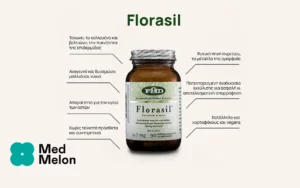Scientific Names of High Mallow:
Malva sylvestris L. [Fam. Malvaceae]
Forms:
High mallow leaf tea
Traditional Usage:
– Anti-inflammatory
– Antioxidant
– Breathing Disorders
– Bronchitis
– Catarrh (respiratory mucous)
– Cellular Regeneration
– Cleansing
– Colds and flu
– Cough
– Detoxification
– Digestive Upsets
– Gastritis
– Gastroenteritis
– Laryngitis
– Poultice
– Skin Problems
– Sore Throat
– Urinary Tract Problems
– Wounds
Overview:
The leaves of high mallow, Malva sylvestris L. [Fam. Malvaceae], otherwise known as blue mallow, are rich in mucilage, a complex mixture of polysaccharides that form a soothing gelatinous fiber when water is added. The leaf tea is considered an emollient, expectorant and laxative and was traditionally used internally for soothing sore throats, laryngitis and tonsillitis, coughs, dryness of the lungs and digestive upsets. The German Pharmacopoeia recommends high mallow tea for treating irritation of inflamed mucous membranes in the mouth and throat and in the gastrointestinal tract. They also recommend the tea for alleviating catarrh (mucous) of the upper respiratory tract. Studies on irritated mucus membranes have shown that the mucilage of Malva sylvestris binds to buccal membranes and other mucous membranes of the body. Mucilage, as a good source of soluble fibre, is particularly recommended for soothing gastrointestinal diseases. The viscous fiber has several beneficial effects on digestion: 1) it reduces bowel transit time (i.e. it acts as a mild laxative); 2) it absorbs toxins from the bowel; 3) it increases fecal bulk and dilutes stool materials thereby reducing stool contact with the intestinal mucosa; and 4) it enhances beneficial bacteria within the gastrointestinal tract and provides an excellent substrate for bacterial fermentation. Mucilage, as soluble fibre, also helps to eliminate anaerobic pathogens from the gastrointestinal tract, a function that can significantly help the body to normalize critical hormone balances required for basic health. High mallow is also used as a poultice for healing wounds and skin inflammations. In folk medicine, high mallow leaf tea is also used against abnormal growths of the stomach and to alleviate urinary infections. The powdered flowers and leaves of related Malva crispa have been shown to stimulate cellular regeneration, cleansing and detoxification; researchers recommend the herb for both healthy and sick individuals.
Active Ingredients:
The leaves of high mallow contain: ca. 8% mucilage, which on hydrolysis affords arabinose, glucose, rhamnose, galactose and galacturonic acid. The leaves also contain a small amount of tannins and noteworthy flavonoid sulphates. Also noted are several 8-hydroxyflavonoid glucuronides; gossypetin 3-glucoside 8-glucuronide and hypolaetin 8-glucuronide. The mucilage of M. sylvestris is made up of high molecular weight acidic polysaccharides (HMWAPs), in the range of 1.3 to 1.6 x 10(6) D. The HMWAPs are composed mainly of glucuronic acid, galacturonic acid, rhamnose and galactose. The blossoms contain more than ten percent mucilage and make a pleasantly sweet tea, which on hydrolysis affords traces of galactose, arabinose, glucose, rhamnose and galacturonic acid. The polysaccharides include pentoses, methyl-pentoses and hexoses that form a soothing gelatinous fiber or mucilage. The blossoms also contain high concentrations of anti-oxidants including flavonoids and small amounts of tannin. Less than 0.1% leucoanthocyanins, but ca. 7% (based on dry wt.) anthocyanins, about half of which is malvidin 3,5-diglucoside (malvin); delphinidin and malvidin 3-glucosides are also present. For the rest, only ubiquitous substances have been detected. [Classen B, Blaschek W. 1998. High molecular weight acidic polysaccharides from Malva sylvestris and Alcea rosea. Planta Med 1998 Oct; 64(7): 640-4].
Suggested Amount:
Unless otherwise prescribed: Boiling water (ca. 150ml) is poured over 3-5 grams (2 teaspoonfuls) of the finely chopped high mallow leaf and after ten minutes strained. The tea can also be prepared by soaking the finely chopped high mallow leaves in cold water for 2-3 hours with occasional stirring. The German Commission E recommends drinking a cup of High Mallow tea several times per day and in the evening before going to sleep.
1 Teaspoon = ca. 1.8 grams.
Drug Interactions:
As with other concentrated sources of soluble fibre, high mallow mucilage can interfere with the absorption of other medicines within the digestive tract if they are taken at the same time. As such, take prescription medications at an alternate time to consuming high mallow tea.
Contraindications:
None known.
Side Effects:
None known.
References:
Duke, J. 1997: The Green Pharmacy, The Ultimate Compendium of Natural Remedies from the World’s Foremost Authority on Healing and Herbs. pp. 104; 119; 181; 187; 169-170; 372; 479; 491. Rodale Press.
Farina A, Doldo A, Cotichini V, Rajevic M, Quaglia MG, Mulinacci N, Vincieri FF. 1995. HPTLC and reflectance mode densitometry of anthocyanins in Malva sylvestris L.: a comparison with gradient-elution reversed-phase HPLC. J Pharm Biomed Anal 1995 Dec; 14(1-2): 203-11.
Schmidgall J, Schnetz E, Hensel A. 2000. Evidence for bioadhesive effects of polysaccharides and polysaccharide-containing herbs in an ex vivo bioadhesion assay
on buccal membranes. Planta Med 2000 Feb; 66(1): 48-53.
Wichtl M and NG Bisset (eds). 1994. Malvae folium – Mallow leaf. In Herbal Drugs and Phyto-pharmaceuticals. CRC Press, Stuttgart, pp. 315-316.
Huang CY, Zeng LF, He T, Wang CJ, Hong JR, Zhang XQ, Hou YH, Peng SS. 1998. In vivo and in vitro studies on the antitumor activities of MCP (Malva crispa L. Powder). Biomed Environ Sci. 1998 Dec; 11(4): 297-306.




